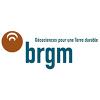ASSURPLUHYT
Cyrille Goarant
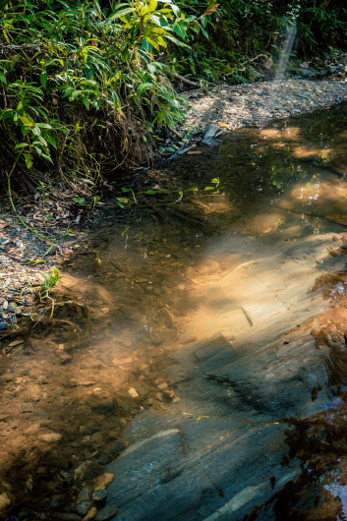
Photo credit: C. Goarant – IPNC
Major health issues, involving direct impacts on local populations, are closely linked to freshwater and the uses of freshwater.
The purpose of the ASSURPLUHYT project is to develop multidisciplinary approaches on health issues related to freshwater in New Caledonia, taking leptospirosis as a case study.
Leptospirosis is a zoonosis estimated to cause over one million cases and 60,000 deaths worldwide each year. Human leptospirosis is endemic in New Caledonia, with an average annual incidence of 45 cases per 100,000 pop., the North-East of the Main Island being particularly affected.
The vast majority of human cases of leptospirosis in New Caledonia are attributable to indirect exposure in an environment characterised by contaminated freshwater, particularly after heavy rain episodes.
Due to the major impact of leptospirosis in public health, notification of cases has been compulsory since 1991; leptospirosis has been studied for nearly 30 years at the Institut Pasteur in New Caledonia (IPNC).
The ASSURPLUHYT project aims to:
- Characterise soil abiotic factors linked to the survival of pathogenic Leptospira;
- Describe the process of Leptospira resuspension by rain, and Leptospira dynamics in rivers during, and after, flooding
Project duration 32 month(s)
Associated program

Responsable scientifique
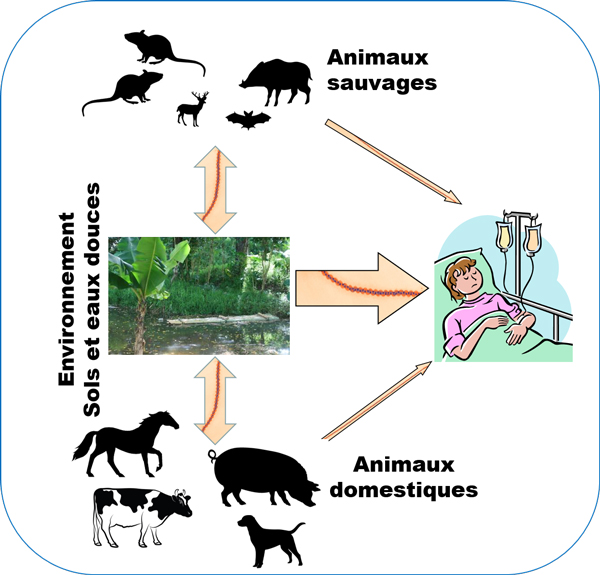
Leptospirosis is a zoonosis estimated to cause over one million cases and nearly 60,000 deaths worldwide each year, with an average annual incidence of 45 cases per 100,000 pop. in New Caledonia.
In rural and urban areas, in subtropical, tropical or temperate climate conditions, leptospirosis presents with symptoms which are difficult to distinguish from infections such as dengue fever or flu.
Transmission to humans occurs when Leptospira enter the human body via skin lesions or mucous membranes :
- through direct contact with animals or their tissues, mainly rodents. Pathogenic Leptospira colonise the renal tubules of mammals and are excreted into the environment via urine;
- In contaminated freshwater environments.
Leptospirosis outbreaks occur after heavy rainfall.
Rainwater leaches through the soil surface and carries Leptospira to water sources, thus leading to human exposure. Most cases of human infections are attributable to indirect exposure via surface water, soil and mud. Such exposure may be work-related, such as people working in water-irrigated rice or taro fields or banana plantations, or may be related to leisure activities or subsistence farming, e.g. swimming or freshwater, fishing, etc.
Outbreaks of leptospirosis tend to occur during periods of heavy rainfall, and seasonal peaks are noted. There is an uneven spatial distribution of cases in New Caledonia, with, however, the highest incidence recorded on the northern East Coast of the Main Island.
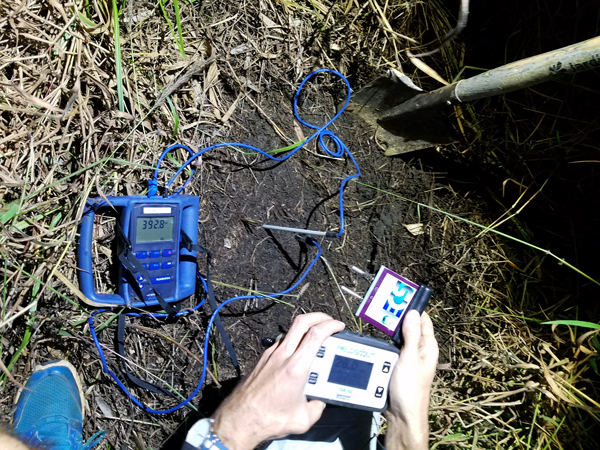
Photo credit ME Soupé-Gilbert IPNC
Currently, there is a scarcity of data concerning:
- the conditions for survival of pathogenic Leptospira in water and soil environments;
- the resuspension of Leptospira during heavy rainfall;
- freshwater contamination dynamics and the resulting health risk.
The ASSURPLUHYT project therefore involves collaborative work between microbiology, geochemistry, hydrology and hydro-geochemistry experts. Consequently, the project will be carried out in close collaboration with the University of New Caledonia ISEA laboratory and the Institute for Research and Development (IRD).
Targeting the Touho region, which presents a high incidence of leptospirosis, the project focus is the characterisation of physico-chemical conditions favouring the survival of pathogenic Leptospira in soils.
The impact of such physico-chemical conditions will then be tested in controlled laboratory conditions.
Based on the expertise developed to study mining-related materials transfer, the characterisation of Leptospira resuspension and transport dynamics during flooding will provide a better understanding of the infection risk linked to heavy rainfall, a risk recognised worldwide.
The project may well find evidence that this risk is related to hydrology, and such findings will allow an estimation of the risk timeframe after water levels fall.
By adopting a multidisciplinary approach, the impact of parameters such as vegetation and soil stability can be addressed, thereby providing additional data on the dispersion of Leptospira in the environment.
These findings will form the basis for a clearer understanding of leptospirosis infection risks, and ultimately the implementation of hydrology and soil properties-related infection risk mapping.
Thus, the ASSURPLUHYT project aims to
- Accurately determine the physico-chemical composition
- of soils;
- of run-off water;
- of Total Suspended Solids (TSS) when flooding occurs.
- Quantify Leptospira in complex matrices (soil, water, TSS during flooding);
- Determine optimal physico-chemical parameters for the environmental survival of pathogenic Leptospira
- Determine the dynamics of Leptospira resuspension during the rise and fall of floodwaters so that health risks may be more accurately assessed.
The Institut Pasteur in New Caledonia (IPNC) UREL laboratory has already identified contaminated sites in Touho, the location for the field study.
Ascertaining, as part of this project, the physico-chemical properties of soils found in these sites – an historic and possible future source of cases of human infection with leptospirosis -, will lead to a more accurate characterisation of the soil as an environmental reservoir of pathogenic Leptospira. The technology required for the detection of viable Leptospira from environmental samples has been validated by the IPNC.
Experimental soil erosion plots already fitted with measurement devices will be used to:
- Characterise the physical and chemical properties
- of soils;
- of run-off water, to obtain a clearer picture of how this compartment contributes to soil-related Leptospira dispersion subject to varying rainfall patterns.
Analyses will be made quarterly so possible seasonal variations can be assessed.
- Determine the impact of environmental parameters on suspended solids and Leptospira numbers in run-off water, based on the presence of different vegetation covers representative of individual ecosystems on various erosion plots;
- Characterise suspended solids and quantify Leptospira in order to determine the role of soil/river connectivity in Leptospira dispersion;
During various rainfall events, water samples will be taken from rivers fed by water from the watershed which also includes the experimental erosion plots.
Detailed analysis of suspended solids in these two fluid compartments (runoff waters and river waters) will elucidate the way(s) in which Leptospira are dispersed, directly in water or attached to the surface of suspended solids.
This research will draw on P. Genthon’s (IRD) expert knowledge in the field of hydrology, and on work using a comparable methodological approach undertaken at UNC (P. Gunkel-Grillon and C. Laporte-Magoni) and at the IRD (F. Juillot) as part of the CNRT projects (DMML and DYNAMINE), and the doctoral thesis by A. Boula (directed by Nazha Selmaoui-Folcher and co-supervised by P. Gunkel-Grillon and C. Laporte-Magoni).
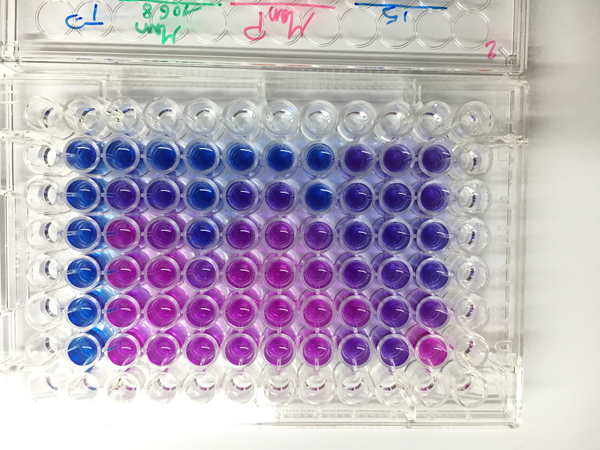
The workshop of the programm "Au fil de l'eau" took place on 17 and 18 September 2019, at the UNC.
Tuesday 18 September was dedicated to the intermediate results of the "Au fil de l'eau" program (whose presentation is available on the french's page of the project). This restitution day was an opportunity to exchange on the various projects that make up the program, between research professionals, actors from the public, private and associative sectors working on these themes
Les 28 et 29 mars 2022, le CRESICA organisait le séminaire "Au fil de l'eau" qui a permis de présenter les résultats du projet.
Rapport final : projet ASSURPLUHYT
Visionnez la présentation faite lors du séminaire grâce à la vidéo du projet ASSURPLHUYT par C. Goarant.






